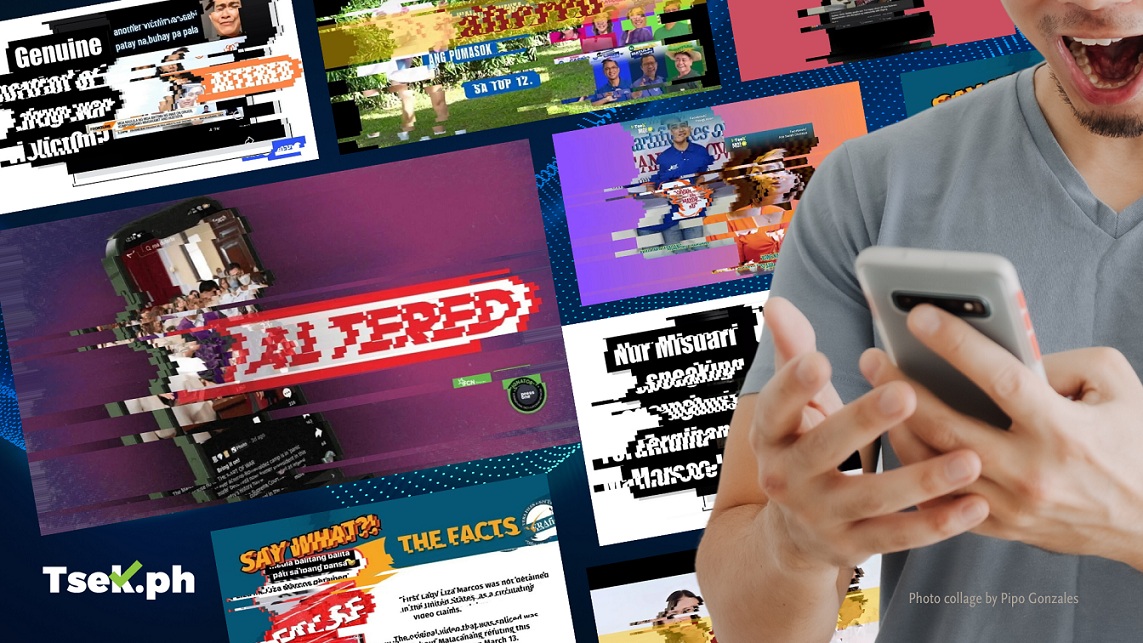AI-manipulated videos and audio have emerged as a growing disinformation tactic ahead of Monday’s midterm elections—more frequent, more targeted and more deceptive. Despite their rise, simpler manipulations, or shallowfakes, remain the more widespread threat, continuing to dominate the misinformation landscape flagged by fact-checkers.
Out of 35 unique altered claims identified by partners of the fact-checking coalition Tsek.ph during the campaign period for national positions from Feb. 11 and May 10, eleven, or nearly a third, likely involved deepfake technology to impersonate public figures or distort reality.
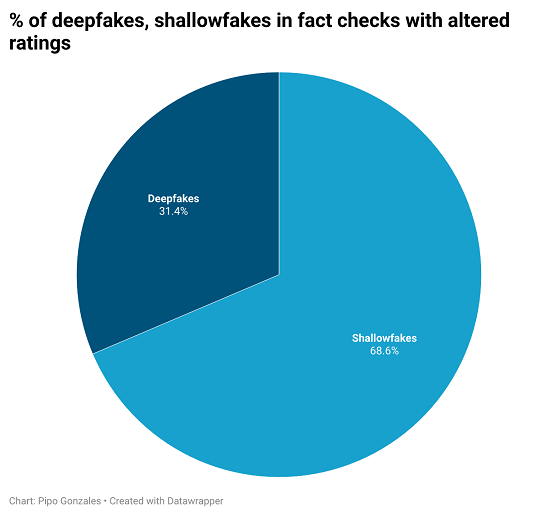
Deepfakes fuel political manipulation
A key concern is how high-profile public figures are being exploited to influence Monday’s elections and change public perception around the arrest of former President Rodrigo Duterte, as well as promote financial scams or questionable products. Many of the 11 likely deepfakes identified by Tsek.ph relied on the likeness or voice of prominent personalities.
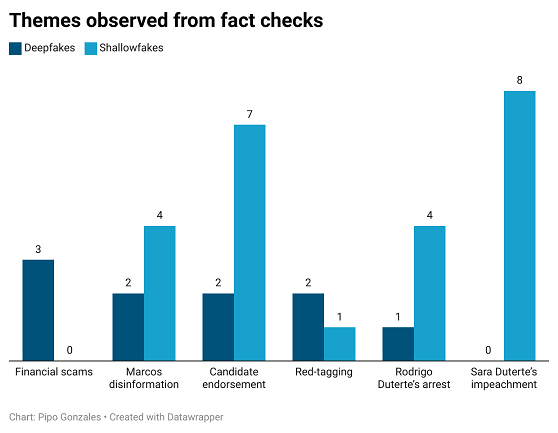
Politically motivated deepfakes include a manipulated video of First Lady Liza Araneta-Marcos in a Duterte campaign, an AI-generated endorsement for detained religious leader and Duterte-backed senatorial candidate Apollo Quiboloy, a fabricated feud between tech mogul Elon Musk and President Ferdinand Marcos Jr., and a fake Mandarin speech by Vice President Sara Duterte.
Among the most recent and attention-grabbing was the deepfake video of the first lady dancing, superimposed onto a political campaign video to falsely imply she was endorsing Duterte’s senatorial slate. The video was created from an image she posted on Facebook while showing off a Marikina bag on a street in Rome where she and her husband had attended Pope Francis’ funeral.
An AI-generated Caucasian-looking avatar, created using Pippit software, was employed in a Facebook video to endorse Quiboloy’s candidacy, combining a digitally fabricated persona with false religious claims.
The deepfake featuring the president and Musk used manipulated audio and video to construct a false narrative of conflict over a purported cryptocurrency platform, aiming to discredit the current administration.
These deepfakes tap into political divisions, invent foreign support, and exploit celebrity appeal to manipulate voter sentiment. By targeting both allies and rivals of important political figures, these fabrications aim to confuse voters and influence election outcomes.
Red-tagging, ICC narratives, scams
Deepfake technology has also been used to falsely link progressive candidates from the Makabayan Bloc and their allied partylists to communist rebels. One video falsely labeled dancing party-list nominees as New People’s Army recruiters. Another showed Rep. France Castro and lawyer Renee Co among supposed insurgents, both bearing arms. This tactic aims to create fear and prejudice among voters, which could reduce their support for these candidates.
Other deepfakes leveraged the arrest and detention of Duterte, who faces trial before the International Criminal Court in The Hague for crimes against humanity arising from his war on drugs. An audio-manipulated Mandarin speech was attributed to his daughter Sara and a fabricated video statement to NBA superstar LeBron James. These AI-generated clips aim to sway sentiment around Duterte’s legal troubles. Duterte is running for mayor in Davao City.
The Commission on Elections has acknowledged the threat of generative AI and harmful content, and released Resolutions 11116 and 11064 to safeguard the integrity of Monday’s elections. Resolution 11064 regulates online campaign materials, mandates disclosure of AI use, and aims to curb disinformation. Resolution 11116 prohibits discriminatory campaign practices like red-tagging, which deepfakes can amplify.
Deepfakes have also been exploited to promote financial scams and products, leveraging trusted images and voices like ABS-CBN’s Noli De Castro, GMA Network’s Vicky Morales, President Marcos, health advocate Willie Ong, and business tycoons such as Musk and Ramon Ang.
These fakes do more than push scams. They erode public trust, particularly in media. When news personalities appear in deepfakes, it can make viewers question whether any mainstream news is real, a tactic seemingly designed to undermine journalism, especially during elections.
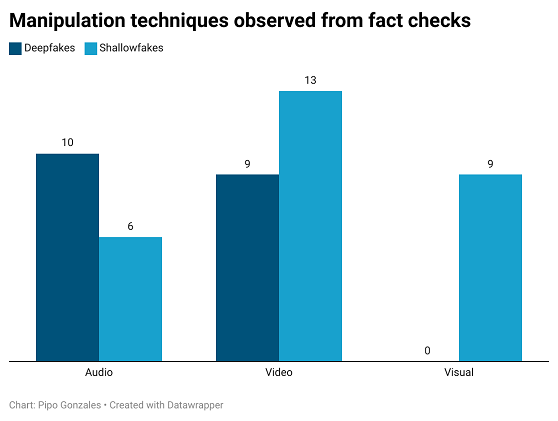
Our analysis of deepfakes a heavy reliance on audiovisual manipulation. Ten of the 11 deepfakes included manipulated audio and nine tampered with video. This combination—synthetic voice overlays paired with AI-manipulated or wholly generated footage—makes the content more believable and emotionally persuasive. Techniques like face-swapping in videos and generating avatars further enhance the realism of deepfakes.
Shallowfakes still lead the pack
Despite the rise in deepfake usage this elections, a significant portion of the altered media identified by Tsek.ph continues to be dominated by lower-tech manipulations or shallowfakes. Of the 35 fact checks, 24 involved easier-to-produce formats: altered video clips, doctored images and fabricated social media posts.
Fourteen directly targeted campaigns, including doctored images of candidates endorsing rivals and fabricated videos misrepresenting endorsements and campaign messages. The manipulation extended to altering screenshots of social media posts and repurposing video clips to attack opponents vying for office.
A recent shallowfake repurposed celebrity Vice Ganda’s real endorsement of senatorial candidate Benhur Abalos into multiple videos showing the noontime show host backing 12 senatorial candidates other than Abalos, plus a few other nonsenatorial running candidates. Earlier, an edited image falsely showed Pasig City Mayor Vico Sotto endorsing opponent Sarah Discaya.
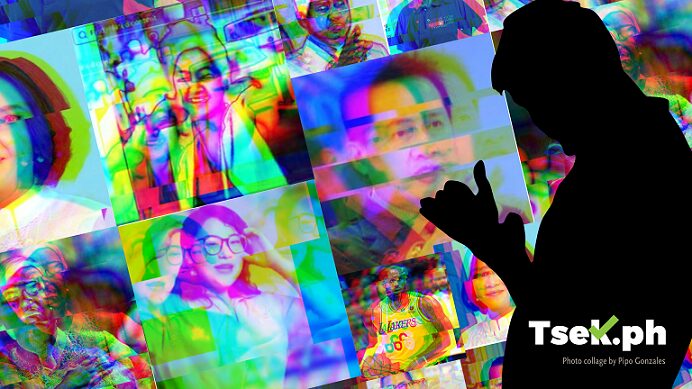
The impeachment of Vice President Sara Duterte became another shallowfake hotspot, with eight instances recorded. These manipulations sought to discredit the impeachment process or rally support behind her. Edited videos distorted narratives surrounding the impeachment, tampered images suggested false endorsements or opposition to the proceedings, and fabricated audio clips misrepresented public sentiment on the issue.
Following Duterte’s highly publicized arrest on March 11, three shallowfakes emerged attempting to reshape his legacy and legal challenges. These manipulations discredited testimonies from drug war victims, attacked his political adversaries, and attempted to sway public discourse around his detention.
Another three shallowfakes exploited the increasing strain between the Marcos and Duterte dynasties. Altered images and video clips dramatizing the rift between the two families were circulated within an already polarized electorate.
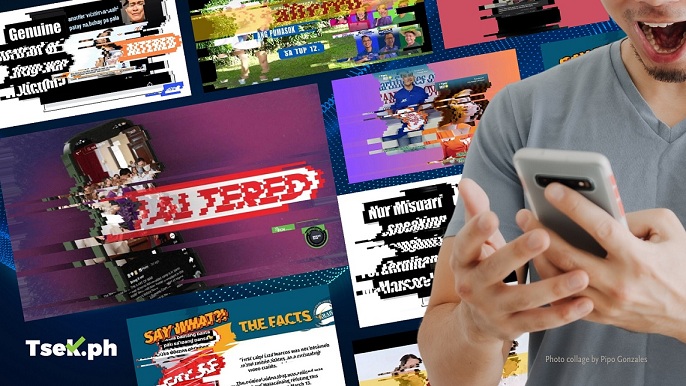
Four additional shallowfakes targeted news organizations. These involved altered news reports, fabricated social media posts mimicking the style and branding of legitimate news outlets, and selectively edited video clips portraying news coverage as biased or inaccurate.
Shallowfakes detected during the campaign period exploited low-barrier techniques. A common method involved misleading voice-overs or other audio layered on real footage. Selective cutting and splicing of footage were frequently used to misrepresent events or statements. Heavily edited screenshots and altered images also spread easily on social media.
The ease and speed with which these shallowfakes are created and shared online make them a potent and rapidly spreading form of electoral disinformation.
But while shallowfakes remain the dominant form of electoral disinformation, the emergence of AI-driven deepfakes shows they are no longer a distant threat, but a present reality, offering new tools for political manipulation, identity theft and reputational attacks.
(Pipo Gonzales is a journalism lecturer at the University of the Philippines Diliman and a member fo the Tsek.ph secretariat. Yvonne T. Chua is an associate professor at the same university and serves as Tsek.ph coordinator.)
